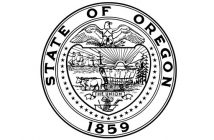Congress will Consider Three Suggestions with A fundamental Reform for the Housing Market
For two-and-a-half years, economists and housing industry analysts have wondered what would happen with Fannie Mae and Freddie Mac. On February 11, they got an answer: the Obama administration announced plans to shut down both of the troubled mortgage giants by 2018 or sooner.
As he met with the press, Treasury Secretary Timothy Geithner cited the “very broad consensus” that the government should play “a much smaller role” in the housing market. Capitol Hill Republicans would agree, pointing to the $154 billion price tag for the 2008 bailout of both firms. (That is the Treasury Department’s estimate.)
The choices on the table. The Obama administration’s white paper offers three proposals to Congress, with the hope of legislation emerging by 2014.
• Option 1. The government walks away from the mortgage market except for the FHA, VHA and a few other programs designed to help low-income and moderate-income homebuyers.
• Option 2. The government offers a kind of downside protection. In addition to backing home loans via the entities mentioned in Option 1, it would also provide “reinsurance” to guarantee private mortgages in the event of a real estate downturn and/or recession. But the guarantee would only apply in a crisis.
• Option 3. A variation of Option 2 that would provide a “reinsurance” backstop for a range of mortgage investments already guaranteed by private insurers. The “reinsurance” would take effect if a private insurer couldn’t pay (i.e., if its shareholders were wiped out).
The timeline. The Obama administration may be long gone by the time all this plays out, but here is the three-stage conception of how it will wind down both agencies.
• Stage 1. Between now and 2014, the government gradually reduces its subsidy for the housing market. The conforming loan limit for Fannie and Freddie – now $729,000 in some metro areas – is scheduled to shrink to $625,000 in October. In addition, Fannie and Freddie would start to require 10 percent down for all loans and fees would rise for the government guarantee.
• Stage 2. Starting around 2013-2014, the federal government will “accelerate the pace of transition” (in Geithner’s words) to a mortgage market based in private capital with government intervention occurring only as needed.
• Stage 3. This stage depends on Congress. The idea is that by the middle of this decade, legislation emerges spelling out Option 1, Option 2 or Option 3 above in detail and a new law is passed.
The big picture. By the end of this decade, it could be considerably harder to buy a home. If the government gets out of the mortgage market (or at least drastically reduces its role), a major influx of private capital needs to flow into the housing system to replace the federal subsidy, with the following possible effects:
• A 30-year fixed rate mortgage could become significantly more expensive. How much more expensive? In early February, Credit Suisse projected that interest rates on a basic 30-year FRM could rise by up to 2 percent if Fannie and Freddie disappeared.
• If the Option 1 scenario occurs, you could see considerably fewer FRMs and more ARMs. In fact, you would likely see fewer fixed-rate mortgages if Options 2 or 3 were chosen by Congress.
• Big banks could grab a bigger chunk of the mortgage market.
• Higher mortgage rates could negatively impact home sales – and in turn, home prices.
We’ll have to wait and see how this all plays out, all while hoping it won’t lead to a decline in home ownership.
Securities offered through 1st Global Capital Corp., Member FINRA, SIPC. Investment Advisory services offered through 1st Global Advisors, Inc.
Lorri Craig, MBA, CFP of Jones & Roth Financial Advisors has an MBA in financial planning from California Lutheran University and over seventeen years experience in financial services. She specializes in complete financial planning, wealth management, advanced retirement and estate planning strategies. LCraig@jrcpa.com.




